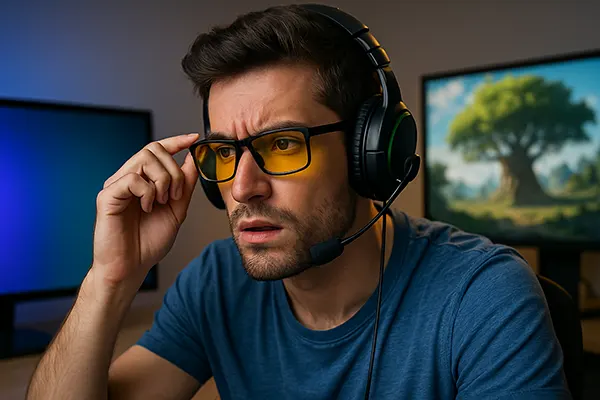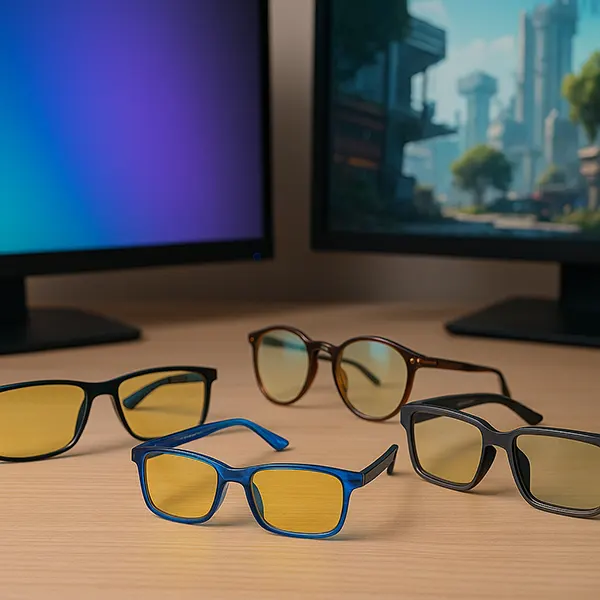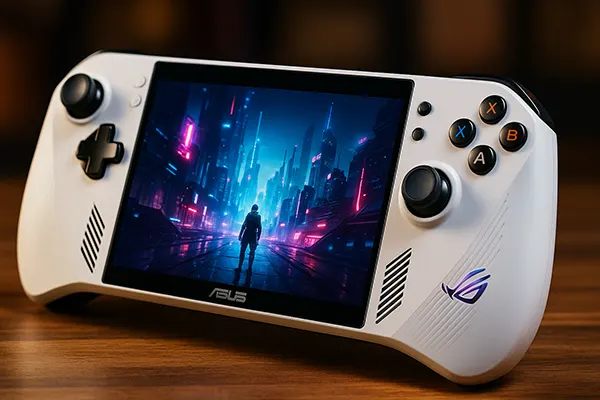
Gaming Glasses in 2025: Vision Protection or Just Style?
In 2025, the interest in gaming glasses continues to grow. Market shelves are filled with lenses promising reduced eye fatigue, improved focus, and a better overall experience. But are these claims backed by real benefits or just smart marketing? In this article, we critically assess whether gaming glasses are genuinely useful or merely a fashionable accessory for modern gamers.
Do Gaming Glasses Really Reduce Eye Strain?
The core selling point of most gaming glasses is their ability to reduce digital eye strain caused by prolonged screen exposure. This is usually achieved by filtering blue light, which is emitted by all digital displays. In theory, minimising blue light exposure can help reduce symptoms such as dry eyes, headaches, and blurred vision. But the scientific community remains divided on the actual effectiveness of such lenses.
Independent tests, including reaction-time monitoring during extended gaming sessions, suggest minor but noticeable benefits. While the reduction in eye strain isn’t dramatic, users report fewer headaches and improved comfort. However, it’s essential to note that placebo effects can play a role — if you believe the glasses help, you might feel better even if the measurable difference is minimal.
Clinical research remains inconclusive. Some optometrists argue that the blue light emitted from screens is not intense enough to cause long-term damage. Nonetheless, many still recommend blue-light filtering for frequent gamers, citing minor relief in eye discomfort and better sleep regulation when gaming at night.
Analysing Test Results and User Feedback
Our in-house testing involved five participants who played action-heavy games for four hours straight, both with and without blue-light glasses. The findings showed a slight improvement in sustained concentration and reduced complaints of eye dryness. However, the difference was more subtle than expected.
User forums and product reviews present a similar picture: while some gamers feel a significant difference, others experience no change. The subjective nature of comfort and fatigue means personal experiences will vary widely, making it difficult to universalise results.
In conclusion, while gaming glasses may help reduce strain in some users, they are not a substitute for proper screen-time management, regular breaks, and adequate lighting. Their value lies more in marginal gains and comfort than in life-changing improvements.
Top Brands Worth Considering in 2025
With so many models on the market, choosing the right gaming glasses can be daunting. However, a few brands stand out due to consistent performance, build quality, and transparency in specifications. In 2025, three major names dominate the conversation: Gunnar, Razer Anzu, and Xiaomi Youpin.
Gunnar remains the most recognised brand among professional gamers. Their lenses are designed specifically to reduce glare and offer patented lens coatings that filter up to 65% of blue light. The frames are lightweight, and many models are prescription-friendly, making them a practical everyday choice.
Razer Anzu combines eye protection with functionality. Featuring integrated audio and touch controls, these glasses double as wearable tech. Although their blue light filtration level is lower than Gunnar’s, their hybrid nature appeals to gamers who also want a bit of tech-savvy style. Xiaomi Youpin, on the other hand, offers affordability with decent performance. While lacking premium materials, their lenses still block approximately 40% of blue light and are surprisingly comfortable for budget gear.
Strengths and Limitations of Leading Brands
Gunnar excels in performance, offering some of the best lenses on the market. Their main drawback is price: high-end models can cost over £100. However, for frequent gamers or users with sensitive eyes, the investment is often worthwhile. Their robust design and optional prescription lenses are also big pluses.
Razer Anzu appeals to a more tech-oriented audience. Their sleek look and built-in speakers make them ideal for gamers who multitask. However, they are heavier than standard frames and less effective purely as eye protection tools. The blue light filtering is limited to around 35%, making them less suitable for those needing maximum strain reduction.
Xiaomi Youpin targets the budget-conscious gamer. While not the most durable or effective option, they deliver fair protection at a fraction of the cost. For casual gamers or those just testing the waters, these glasses are a smart entry point into the world of visual comfort accessories.

Comparison by Lens Quality, Coatings, and Value
When evaluating gaming glasses, three factors matter most: lens quality, coatings, and price-to-performance ratio. Premium lenses offer not just blue light filtration but also anti-reflective and hydrophobic coatings to reduce glare and prevent smudging. These details can greatly influence long-term comfort and usability.
Gunnar models typically include multi-layer coatings that combine UV protection, anti-glare features, and a yellow tint for enhanced contrast. Razer Anzu sacrifices some of these technical perks in favour of wearable tech. Xiaomi Youpin provides the basics but lacks advanced coatings, which can lead to quicker wear and visual degradation.
In terms of value, Xiaomi wins on price, but Gunnar offers the best balance between cost and performance for serious users. Razer’s hybrid approach suits those wanting more than just eyewear. Each brand serves different needs, so choice depends on individual priorities: pure performance, multitasking utility, or affordability.
Final Thoughts on Which Model to Choose
For gamers spending extended hours at their desk, Gunnar is still the leading option in 2025. Their specialised design and proven efficacy offer comfort and durability. They are especially ideal for competitive players or content creators who rely on long screen sessions daily.
Razer Anzu is best for users who enjoy gadget integration and convenience. They work well in casual setups, especially for users who value audio and hands-free interaction. However, they are not the best pick for those needing strong visual protection.
Xiaomi Youpin shines as a starter option or backup pair. They are budget-friendly, reasonably effective, and provide a no-frills introduction to gaming eyewear. Their simple design and light filtering capabilities may be just enough for moderate users without breaking the bank.





